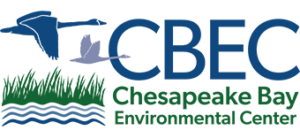Welcome to the CBEC Tiny Things Tour (Station 1)
This tour is designed to acquaint CBEC visitors with the amazingly diverse array of organisms here that are not typically noticed, mainly because they’re too small to be seen without either very careful observation or the aid of a magnifier (either a handheld device or a microscope).
The tour will discuss representatives of the six kingdoms of living things (Bacteria, Archaea, Fungi, Plants, Protists, and Animals), as well as viruses. In addition to brief discussions of the particular organisms themselves, we’ll consider the role that these organisms play in their immediate environment, their effect on the larger biosphere, and their ability to teach us about the past and the future.
Taking the Tour:
To take the tour, visitors may use the Tiny Things Tour map, where the 14 stations are indicated with red numbers. The map should be used in conjunction with the printable list of stations. The list has the GPS coordinates for each station, along with QR codes that provide links to the web pages that describe each station. The GPS coordinates, as well as a simple description of each location are included on each station’s web page. If visitors haven’t brought along a mobile device (to view the web pages), they can print a copy of the tour pages by clicking this link. A guided version of the Tiny Things Tour is scheduled on a regular basis. Check the CBEC schedule for upcoming guided tours.
Each web page includes a photo of the representative organism, it’s common name and scientific name, a description of the station location (including its GPS location), and a description of the organism and its environment. Organism names are linked to the Encyclopedia of Life website, so that visitors can learn more about its taxonomy and various other details. The pages also include additional links and references for interested visitors (under the “Learn More” and “Notes & References” headings). Each page includes an icon, described below, that will let visitors know the range of sizes of the organism under discussion. Although the tour stations are numbered, there is no need to visit them sequentially. Check out as many or as few stations as you have time for, and in whatever order you like.
An eye icon indicates that the representative organism may be seen without the aid of a magnifier
A magnifying glass icon indicates that the representative organism typically requires a handheld magnifier to observe
A microscope icon indicates that the representative organism cannot be seen without the aid of a microscope
Tour Links:
List of Stations (with locations and links to web pages)
Start the Tour (Go to Station 2)
Learn More:
Chesapeake Bay Microorganisms: Keys to Understanding the Ecosystem
https://www.chesapeakebay.net/discover/field-guide
Notes & References:
Bodelier P, Dedysh S. (2013) Microbiology of wetlands. Front Microbiol. 4:79
photo attribution: copepod – http://eol.org/pages/2625033/overview (distributable under Creative Commons license)


